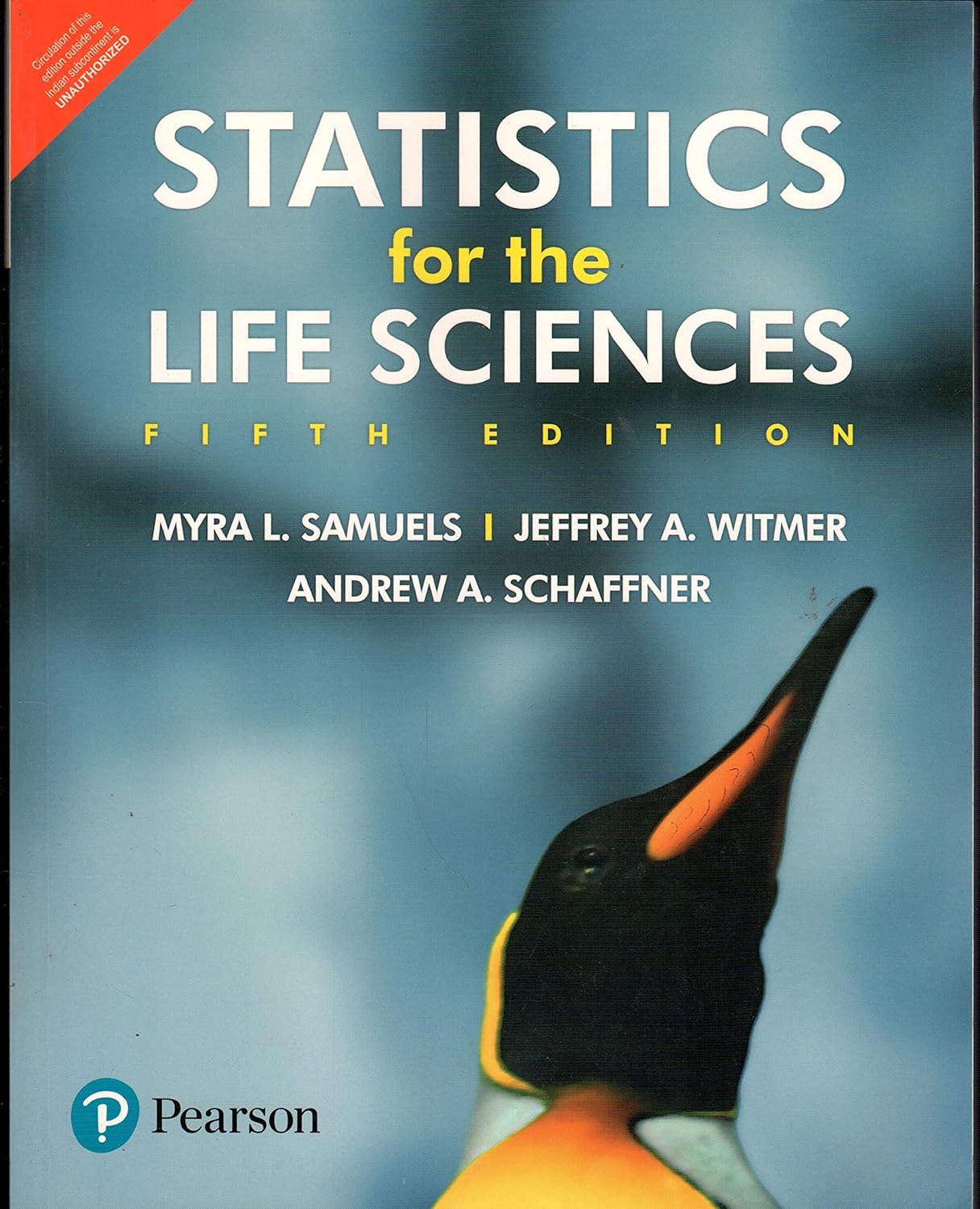Statistics For The Life Science
Statistics For The Life Science
Couldn't load pickup availability
Bringing Statistics to Life, The Fifth Edition of Statistics for the Life Sciences uses authentic examples and exercises from a wide variety of life science domains to give statistical concepts personal relevance, enabling students to connect concepts with situations they will encounter outside the classroom. The emphasis on understanding ideas rather than memorizing formulas makes the text ideal for students studying a variety of scientific fields: animal science, agronomy, biology, forestry, health, medicine, nutrition, pharmacy, physical education, zoology and more. In the fifth edition, randomization tests have been moved to the fore to motivate the inference procedures introduced in the text. There are no prerequisites for the text except elementary algebra. Features: 1. Real data in the examples and exercises provide practical and relevant ways for students to connect concepts to situations they will encounter outside the classroom. 2. Probability theory is included only to support statistics concepts. 3. Students are taught to recognize the importance of an analysis that is appropriate for the research question to be answered, for the statistical design of the study and for the nature of the underlying distributions. 4. Students are led to recognize the impact on real research of design concepts such as random sampling, randomization, efficiency and the control of extraneous variation by blocking or adjustment. Table of Contents: Data and distributions1. Introduction 2. Description of samples and populations3. Probability and the binomial distribution 4. The normal distribution5. Sampling distributionsunit ii: inference for means6. Confidence intervals 7. Comparison of two independent samples8. Comparison of paired samples unit iii: inference for categorical data9. Categorical data: one-sample distributions10. Categorical data: relationships unit iv: modeling relationships11. Comparing the means of many independent samples12. Linear regression and correlation13. A summary of inference methods.
Pearson Education
Share


